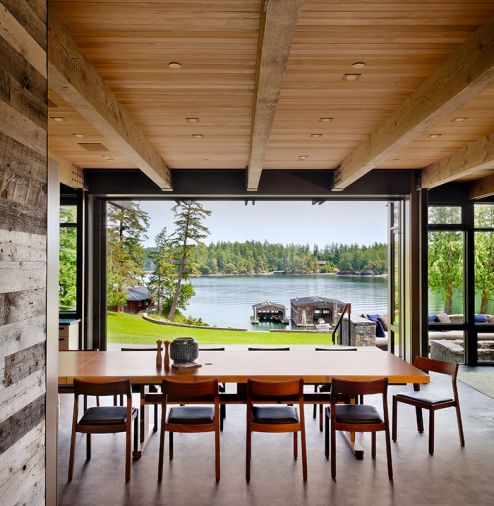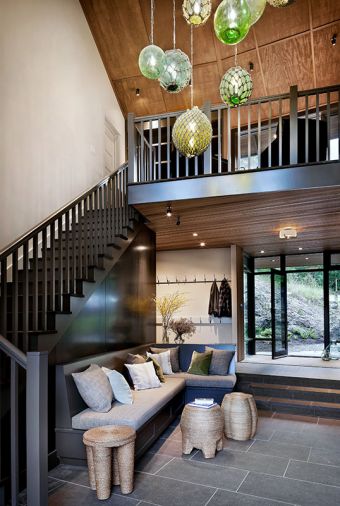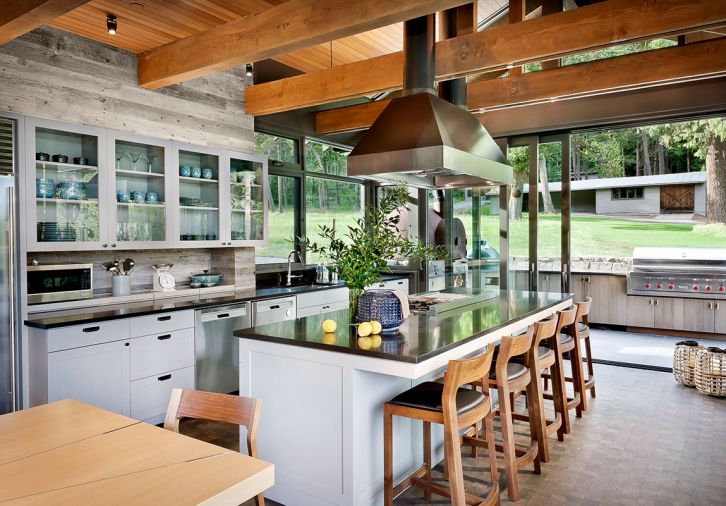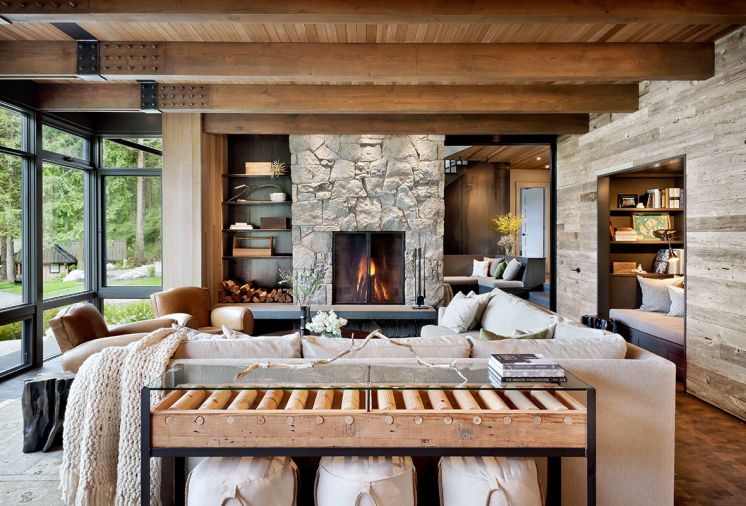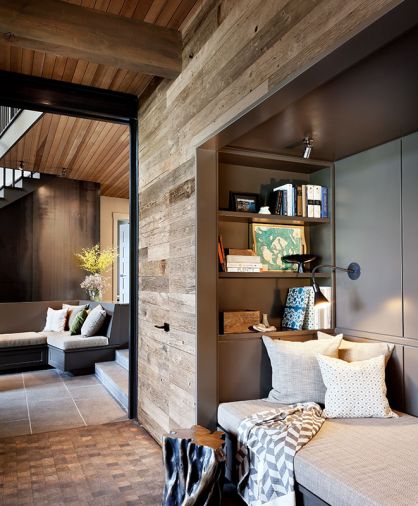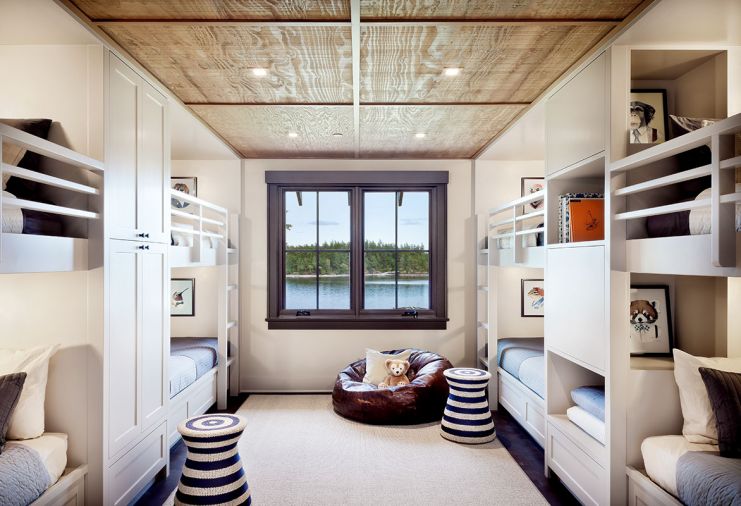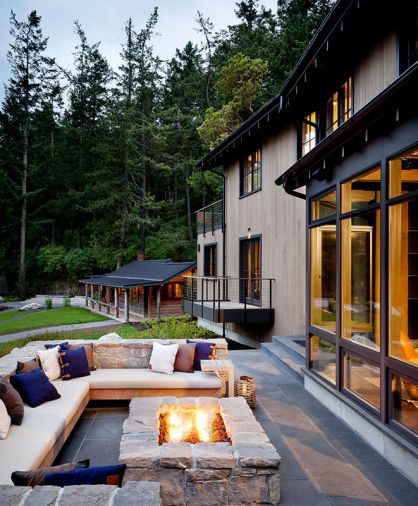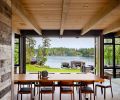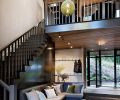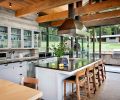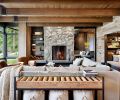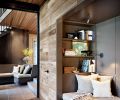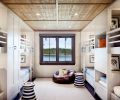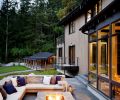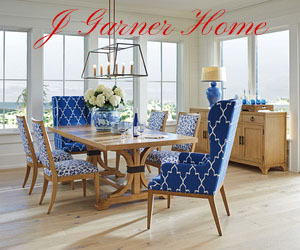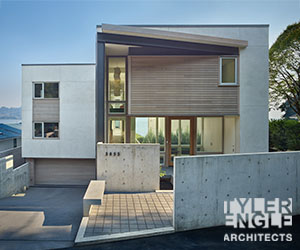When the current owners of this historic Orcas Island compound approached John DeForest, AIA, and Rosie Donovan of DeForest Architects of Seattle eight years ago, they had one overarching goal: to restore the soul of the land. To that end, the architects introduced the idea of a series of weekend design workshops to better acquaint them with the property, the beauty of its landscape, its history and the different perspectives belonging to a young couple planning a family, but also to those family and friends who would be sharing the compound with them. Key among them was the family’s project manager, Alison Kartiganer of Lumberjill LLC, who became the go-between for the group and the architects.
“It was a long process,” admits DeForest, “with different structures in different states of disrepair. The original main house had some unfortunate additions and modifications dating from the 1970s-90s executed by a previous owner.”
“It resembled a big wedding cake,” recalls Donovan. “We considered an extensive remodel but ultimately recommended razing it to create a common space where everyone could gather. We saw it as an organizing element that created a better relationship to the existing cabins.” Sustainability was another key goal, which included removing a large, ugly creosote-infused retaining wall to create better habitat for salmon and installing a geothermal system beneath the great lawn.
James Fung of NB Design Group Interiors of Seattle, with whom DeForest Architects often collaborates, was brought in on the project in 2013, when work on the main house was at its inception. “Our design aesthetic,” says Fung, who visited the site and its owners with DeForest Architects to work through the architecture, type of materials, furnishings, and fabrics, “takes its inspiration from the sense of place. Not only the landscape and location – the big knoll looking out to the water – but how the clients live on the island.”
The homeowners were adamant. They did not want the house to look brand new, but rather a part of the landscape and its history. This led the architect/design team to search for materials that would express a sense of time-wornness. One solution was to vary the use of materials for visual contrast. Finding snow fencing from Idaho and Montana that had weathered countless winters and various temperatures was a bonanza.
“Pioneer Millworks of Portland which has some really cool reclaimed wood,” says Fung, “supplied the snow fencing, which we used throughout to tell a story relating to the windows, stone and some salvaged fir beams found throughout the property.”
The architects blended the vernacular of the existing structures they had repaired with their design. “Traditional casement windows upstairs,” says DeForest, “contrast with modern lift and slide aluminum clad/wood doors downstairs.”
Creating a central gathering space that would answer the needs of the various friends and family visiting the property became a multi-layered task for the architect/design team. “The homeowners are wonderfully outgoing people,” explains DeForest. “They also recognized that some friends needed a little more private space. So, working with NB Design Group, we designed a variety of different places for people to gather in the living room. The sectional is for big boisterous conversations, the club chairs for more intimate ones and the cozy seating nook for quieter moments – reading a story to a child, for example.”
Fung’s custom-built large sectional is upholstered with indoor outdoor Holly Hunt chenille fabric that is fabricated to withstand heavy light exposure, and yet remain comfortable and easy-to-clean. Although the homeowners were enamored with an antique rug to ground the design, it was too small to suit the room’s furnishings. “Turabi Rug Gallery,” says Fung, “was able to replicate the antique rug using 100% wool for durability and in the required size for the room.”
Here again, contrasting finishes underscore the historic character of the home’s vernacular references. Donovan points to the Bedrock Natural Stone Whistler Basalt - a volcanic rock found in British Columbia - for the fireplace. The mixture of gray and warm tones reiterates the snow fencing that runs through the living room back to the adjacent kitchen and up a central staircase. Blackened steel shelving and backing at left adds dramatic contrast with the adjacent stone fireplace.
With multiple guests for dining at any one time, a storage closet tucked into the reading nook wall houses stackable Design Within Reach Profile dining chairs that roll out when needed. The adjacent mudroom that doubles as a type of hotel lobby is distinguishable by its Black Tusk Basalt flooring that begins where the end grain hemlock flooring - a historic reference to its frequent use in period Northwest warehouses - ends. Overhead braced beams hug the hemlock tongue and groove ceiling that define the central living areas.
When DeForest Architects began working with the family, their children weren’t born yet, but it was important to them to create a place where their family would make memories for generations. Out of that discussion came the suggestion for a bunkroom with eight bunkbeds, each with its own personality, a book nook, shared closet, and linen storage.
“Every decision we made,” says Fung, “had to be long-lasting and durable, able to grow with the homeowners. The bunkroom was a place you could host lots of people, primarily kids, yet comfortable enough for an adult retreat as well.” Downstairs, the choice of contrasting woods was darker than those found upstairs, where Revere Pewter (Benjamin Moore) paint created a brighter ambiance with more durable surfaces and a softer, quieter feel that would wear well.
Outdoors a built-in firepit and wall in the same stone as the fireplace provides a gathering place with the same Black Tusk Basalt flooring found in the entry for continuity. The indoor/outdoor custom bench fabric blends with the tones found in the home’s vertical grain Western red cedar siding. The subtlety of the exterior material choices was aimed at making the gathering place blend well with the existing cabins.
Kudos go to the contractor as well says DeForest. “Working with a full-service contractor like Krekow Jennings enabled us to focus on the big picture from the outset, including mapping out a budget and schedule for multiple phases of work. From project management to craftsmanship, their expertise was key to pulling off a high-quality project with so many moving parts.” Additionally, having worked with this family over a long period of time enabled the architects to get to know them extremely well. “They are really wonderful,” says Donovan. “Generous, thoughtful, adventurous and fun. What we’re proudest of is that our design reflects that spirit.”
“It truly feels like them,” adds DeForest. “There’s a rustic simplicity. It’s not important to be elegant when you’re relaxed and on vacation. Things feel easy, low maintenance, not too busy visually, just beautifully crafted.”
PROJECT SOURCES
CONTRACTOR
Krekow Jennings
www.krekowjennings.com
ARCHITECT
DeForest Architects
www.deforestarchitects.com
INTERIOR DESIGN
NB Design Group
www.nbdesigngroup.net
LANDSCAPE ARCHITECT
Allworth Design
www.allworthdesign.com
RECLAIMED WOOD/SNOW FENCING
Pioneer Millworks
www.pioneermillworks.com

